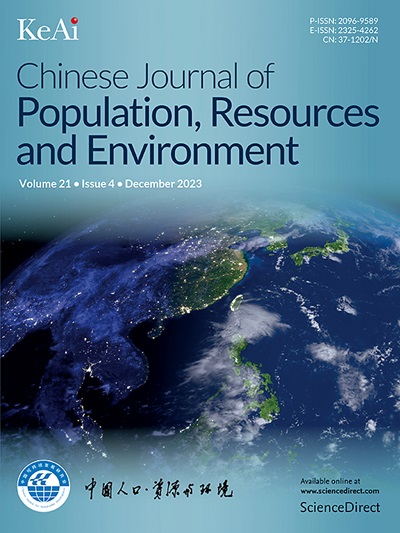Megacity pathways in China under the dual carbon goal: The case of Shanghai
IF 4.8
4区 环境科学与生态学
Q2 ENVIRONMENTAL STUDIES
Chinese Journal of Population Resources and Environment
Pub Date : 2024-09-01
DOI:10.1016/j.cjpre.2024.09.003
引用次数: 0
Abstract
The pathways to achieving carbon neutrality at the city level are diverse due to varying energy supply and demand conditions. Shanghai faces obstacles such as limited land resources, high costs of renewable energy technologies, and instability of renewable energy. These challenges hinder the city’s efforts to achieve carbon peak and carbon neutrality (dual carbon). Therefore, Shanghai must identify and optimize its development path for renewable energy under the dual carbon goal. We employed the Low Emissions Analysis Platform-Shanghai (LEAP-SH) model to simulate the impact of policies, such as industrial upgrading, energy efficiency improvement, energy structure optimization, increased technical innovation on energy, and ecological restoration, on the carbon emission pathways from 2022 to 2060 using five different scenarios. Our results indicate that Shanghai has the potential to achieve carbon neutrality in 2059 by promoting carbon reduction, pollution control, and green expansion. Moreover, we determined that the manufacturing industry; power generation industry; and transportation, storage, and mail services are the three major sectors for emission reduction under the dual carbon goal. Furthermore, the capacity and output of coal-fired power plants will be gradually replaced by offshore wind power in the dual carbon pathway. Finally, this study proposes countermeasures and suggestions for Shanghai to attain the dual carbon goal and high-quality development.
双碳目标下的中国大城市发展之路:上海案例
由于能源供需条件不同,在城市层面实现碳中和的途径也多种多样。上海面临着土地资源有限、可再生能源技术成本高、可再生能源不稳定等障碍。这些挑战阻碍了上海实现碳峰值和碳中和(双碳)的努力。因此,上海必须在双碳目标下确定并优化可再生能源的发展路径。我们利用低排放分析平台-上海(LEAP-SH)模型,通过五种不同的情景模拟了产业升级、能效提升、能源结构优化、能源技术创新和生态修复等政策对 2022 年至 2060 年碳排放路径的影响。结果表明,上海有潜力通过推动碳减排、污染控制和绿色扩张,在 2059 年实现碳中和。此外,我们还确定,在双碳目标下,制造业、发电行业和交通运输、仓储和邮政业是三大主要减排行业。此外,在双碳路径中,燃煤电厂的产能和产量将逐步被海上风电取代。最后,本研究提出了上海实现双碳目标和高质量发展的对策建议。
本文章由计算机程序翻译,如有差异,请以英文原文为准。
求助全文
约1分钟内获得全文
求助全文
来源期刊

Chinese Journal of Population Resources and Environment
ENVIRONMENTAL STUDIES-
CiteScore
4.30
自引率
1.10%
发文量
791
审稿时长
79 days
期刊介绍:
The Chinese Journal of Population, Resources and Environment (CJPRE) is a peer-reviewed international academic journal that publishes original research in the fields of economic, population, resource, and environment studies as they relate to sustainable development. The journal aims to address and evaluate theoretical frameworks, capability building initiatives, strategic goals, ethical values, empirical research, methodologies, and techniques in the field. CJPRE began publication in 1992 and is sponsored by the Chinese Society for Sustainable Development (CSSD), the Research Center for Sustainable Development of Shandong Province, the Administrative Center for China's Agenda 21 (ACCA21), and Shandong Normal University. The Chinese title of the journal was inscribed by the former Chinese leader, Mr. Deng Xiaoping. Initially focused on China's advances in sustainable development, CJPRE now also highlights global developments from both developed and developing countries.
 求助内容:
求助内容: 应助结果提醒方式:
应助结果提醒方式:


